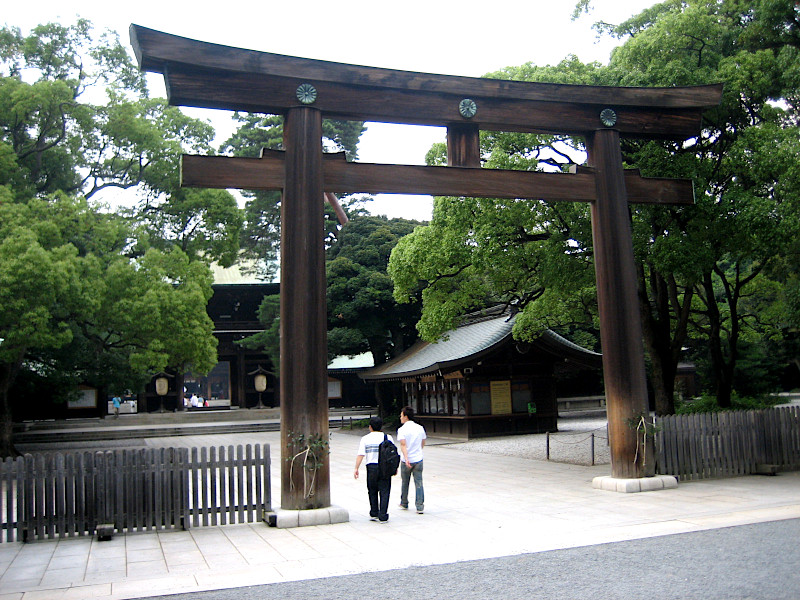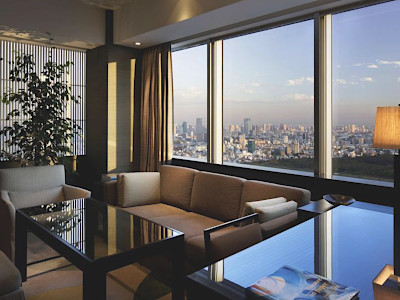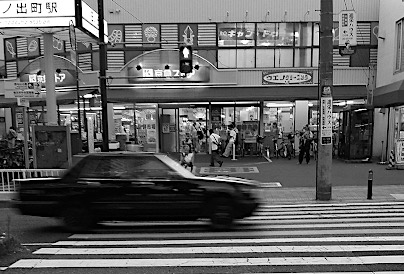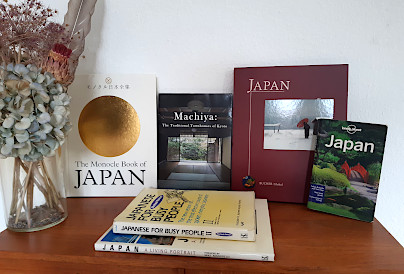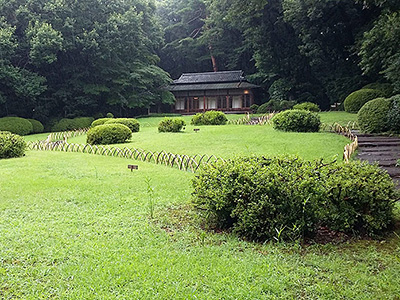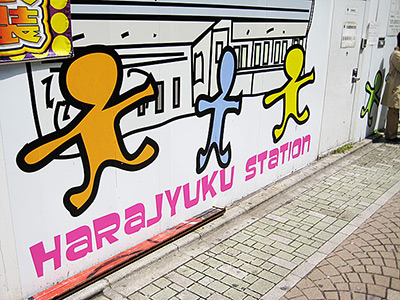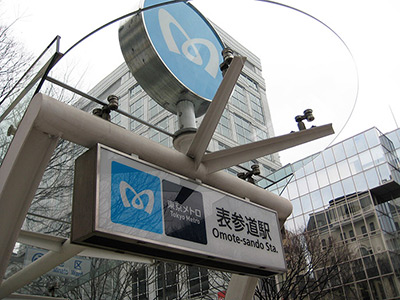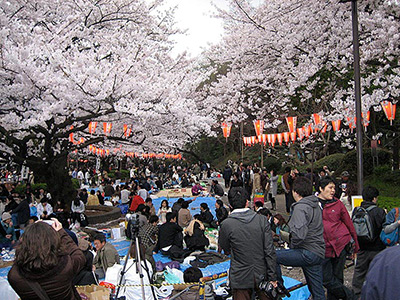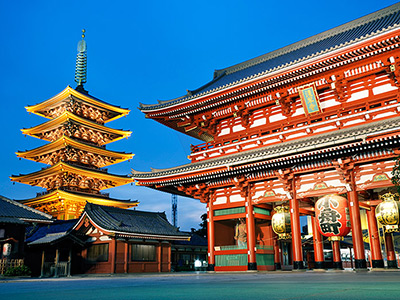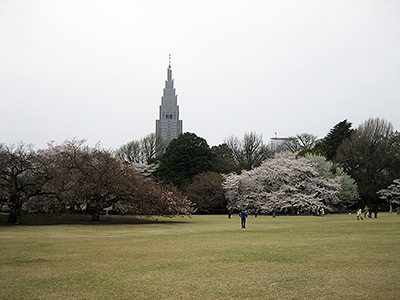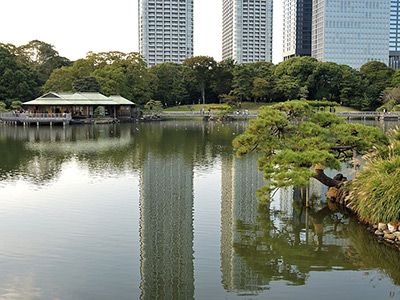Meiji Shrine (Meiji Shingu) in Tokyo
This post can contain affiliate links, which means that we may receive a small commission if you make a purchase using these links.
Facts & Figures
Meiji Shrine (Meiji Jingu) is without doubt one of the most famous and important Shinto shrines in Japan and one of the biggest tourist attractions in Tokyo (Shibuya district). Nearly ten million visitors come here from January till December and in the first 3 days of January alone, there are more than 3 million visitors to celebrate the beginning of the new year (hatsumode). The shrine is dedicated to Emperor Meiji (1852 - 1912) and Empress Shoken (1849 - 1914). The emperor opened Japan to the West and laid the foundation to modernize the country. He played an important role in the Meiji Restoration (1868 - 1912), which marked the end of the feudal era.
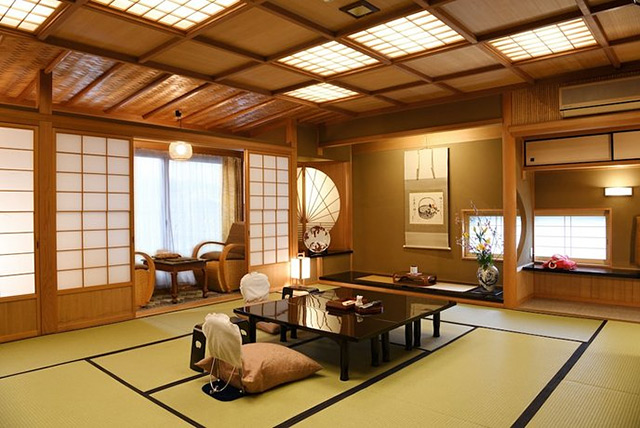 Explore Ryokans in Tokyo >
Explore Ryokans in Tokyo >
Ryokans are the perfect way to discover old Japanese culture and traditions.
Emperor Meiji is not buried within the shrine area instead you will find his tomb on Momoyama Hill in Kyoto. The Meiji Shrine is located within a 708200 square meter park and consists of an inner (Naien) and outer (Gaien) precinct. The park is covered by 120000 trees of 365 different species, which were donated from all over the country. It is now used as a recreation area for many people living the busy Tokyo life. The main entrance can be found near Harajuku Station and as alternatives, there are entrances in the north near Yoyogi Station or the west near Sangubashi Station. Each is marked by giant torii gates. Walking through them means you enter now a sacred area. Meiji Jingu has in total eight torii gates. After 10 minutes of walking, you will reach the shrine’s inner precinct with its six main buildings. I would also recommend you to visit the beautiful Meiji Jingu Inner Garden, Meiji Jingu Museum, and the nearby Yoyogi Park. My tip: Usually on Sunday mornings you have the chance to witness traditional Japanese wedding processions at the main shrine area. Also, some unique souvenirs can be bought here like waka (poems written by the Emperor and Empress), Kikanbun (letters to the deities), or Ema (wooden tablet).
- Meiji Shrine (Meiji Jingu):
- Opening Hours - daily (whole year), from sunrise to sunset - exact time is depending on the season
- Admission Fee - free of charge
- Meiji Jingu Museum:
- Opening Hours - 10:00 am to 4:30 pm (last admission at 4:00 pm)
- Closed - on Thursdays
- Admission Fee - 1000 yen (Adults), 900 yen (High school students or younger)
- Meiji Jingu Inner Garden and Treasure Museum (Homotsuden):
- Opening Hours - 9:00 am to 4:30 pm (last admission at 4:00 pm, March to October)
- Opening Hours - 9:00 am to 4:00 pm (last admission at 3:30 pm, November to February)
- Admission Fee - 500 yen (Adults)
My tips for local activities

How about exploring the fascinating city Tokyo with a local guide? The personalized tour by our partner GetYourGuide can take between 5 - 6 hours. For more details check out this page >
History
After the death of Emperor Meiji in 1912 and his wife Empress Shoken in 1914 the Japanese government decided to honour them with this shrine. The construction on a former wasteland took from 1915 to 1921 under the guidance of Japanese architect Ito Chuta (1867 - 1954). The grounds were finalized in 1926. The huge Meiji Jingu Forests was planted with the help of 110000 young volunteers. During heaving bombings in World War 2, the shrine complex was completely destroyed. Meiji Jingu was a government-supported shrine (Kanpei-Taisha) until 1946. The reconstruction afterward was finished in 1958 thanks to a public fundraising effort. Meiji Jingu celebrated his 100th anniversary in 2020.
Location

The Meiji Shrine is located within Shibuya-ku and next to the Yoyogi Park in Tokyo.
Address: 1-1 Yoyogi, Kamizono-cho, Shibuya-ku, Tokyo 151-8557
How to get to Meiji Shrine?
- 5min from Harajuku Station along the JR Yamanote Line
Sightseeing spots
Top:
Ootorii Gate, Great or Second Torii Gate - The impressive 12m high and 17.1 meters wide entrance gate with a weight of 13 tons was made of 1500-year-old cypress wood from Mount Tandai in Taiwan. The posts have a diameter of 1.2 meters. It was reconstructed in 1975 after the original one caught fire by lightning in 1966. Ootorii Gate is the largest wooden myosin-style torii of its kind in the country.
Main Hall (Honden) - You reach the Main Hall after passing the Minami Jinmon Gate (built-in 1921). The huge wooden structure made from Japanese cypress trees was built in the nagare zukuri architectural style.
Meiji Jingu Treasure House (Homotsuden) - The Treasure House was built in 1921. It was designated as an Important Cultural Property in 2011. You will see their imperial portraits, personal belongings of Emperor Meiji and Empress Shoken, and a famous court kimono.
Shiseikan Dojo - Right next to the Treasure Museum is the Martial Arts Training Hall located.
Kaguraden (Hall of Shinto Music and Dance) - Here you can witness sacred dance performances called Kagura and traditional ceremonies with the name Kigansai. The construction of Kaguraden was completed in 1993. The three-story building’s architectural style is called Irimoya-Nagarezukuri.
Meiji Jingu Inner Garden - The popular garden with its over 150 species of irises (Minami-ike Shobuda), the famous Kiyomasa well with its magical powers, and a traditional tea house is accessible for an entrance fee of 500 yen. The garden was personally designed by the Emperor for his wife Empress Shoken. Read more >
Meiji Jingu Museum - The museum was designed by architect Kuma Kengo and opened for the public in 2019 to mark the 100th anniversary of the founding of the shrine. The exhibition space with the size of 3200 square meters displays over two floors items related to Emperor Meiji and Empress Shoken.
Sake and Wine barrels - It is very popular to take pictures of this wall of donated sake barrels (Kazaridaru) by well-known sake breweries from across Japan. More than 200 are piled up and create a unique sight for locals and tourists. Another wall of wine barrels from France is also on display.
Couple Camphor Trees - These huge camphor trees were planted in 1920 and are located near the main shrine. They are connected by a sacred rope (shimenawa) and symbolize Emperor Meiji and Empress Shoken, who were deeply in love throughout their whole life.
Meiji Memorial Hall (Meiji Kinenkan) - Many wealthy Japanese have their wedding ceremonies here. To witness such a traditional Shinto-style wedding is really impressive.
Nearby:
Yoyogi Park - It is one of the largest public parks in Tokyo. The mixture of ponds, wide lawns, bike paths, picnic areas, bird sanctuary, cycle rentals, many sports facilities, and a huge number of trees (more than 15000) makes it a very popular spot for locals and tourists. Read more >
Harajuku - The most popular fashion hotspot area for teenagers in Tokyo. Read more >
Omotesando - This place is also called the Champs-Elysees of Tokyo. Omotesando is a 1km long tree-lined (Zelkova trees) avenue with the best designer shops and brands. Read more >
Festival & Events (dates can change without notice)
January
Saitansai - New Year's Day ritual (1st)
The Hatsumode (first shrine visit of the year) has a high importance for many Japanese. The most popular with 3 Mio. visits can be found at the Meiji Shrine.
February
National Foundation Day Festival (11th)
The annual parade in Tokyo starts at 9:00 am and goes till 2:00 pm. It begins at the Jingu Gaien Ginkgo Avenue (Namiki-dori) and ends at the Meiji Shrine (Meiji Jingu).
April/May
Meiji Jingu Spring Grand Festival (29th to 3rd)
Many Shinto ceremonies are held at the shrine. Accompanied by traditional Japanese performances like Noh and Kyogen theatre, Sankyoku (traditional Japanese music), Satsuma biwa (Japanese lute), Bugaku (imperial court music), and classical Japanese dance Hogaku and Hobu.
November
Autumn Grand Festival (2nd to 3rd)
The Ritual Ceremony is starting at 10:00 am and celebrates the birthday of Emperor Meiji every year on the 3rd of November.
Where to stay in Tokyo?
Book your Japan trip and have a great time
Day trips from Tokyo
My 100 Best Moments in Japan
I have visited Japan nearly every year since 2004. This is my collection of the 100 best moments in my favorite country. Enjoy the pictures and I hope you will start your own journey soon.
Find out more >
Books about Japan
Reading books is a great source of inspiration for me. Check out my recommended list of books about the fascinating country Japan.
My Book recommendations >

